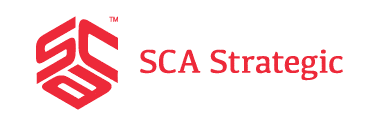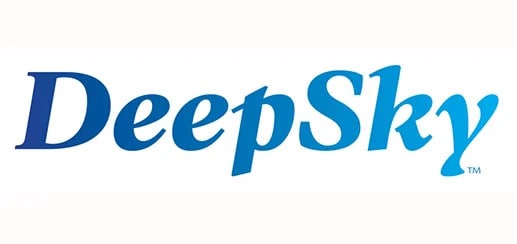The questions we hear most often from customers are, “How much does outsourced warehousing cost?” and “What factors influence warehouse pricing?” While the answer can be complex, in 2017, we began gathering data from our network of top fulfillment warehousing companies to help business owners and warehouse operators better understand average warehousing pricing and costs. This page represents the culmination of years of effort. It includes historical survey results from our annual warehousing costs and warehousing pricing surveys, featuring data from warehouses across the US and Canada.
When outsourcing, your business will incur a monthly fee for warehouse space utilized during that month. This fee will take the form of one of the following: a pallet fee, a cubic footage fee, a square footage fee, or a bin fee. Each of these fees are explained in detail on our Warehouse Storage and Pallet Storage page. The main benefit of this warehouse pricing model is that it is variable – you only pay for what you use during the month, as opposed to leasing a warehouse space, or purchasing and building a warehouse, where you will pay a fixed cost each month whether you use the entire space or not. Outsourced warehousing companies also charge a fee for every service they perform for you (e.g. receiving products, picking and packing orders, and shipping), as detailed in the table below.
| Question | 2025 | 2024 | 2023 | 2022 | 2021 | 2020 | 2019-2018 | 2017 |
|---|---|---|---|---|---|---|---|---|
| Average Warehouse Storage Price Per Pallet Per Month | Pallet: $20.17 | Pallet: $20.37 | Pallet: $18.30 | Pallet: $16.21 | Pallet: $14.79 | Pallet: $14.58 | Pallet: $13.20 | Pallet: $13.02 |
| Average Pallet Storage Fee Per Cubic Foot Per Month | Cubic Ft.: $.46 | Cubic Ft.: $0.55 | Cubic Ft.: $0.55 | Cubic Ft.: $0.50 | Cubic Ft.: $0.45 | Cubic Ft.: $0.45 | Cubic Ft.: $0.50 | Cubic Ft.: $0.54 |
| Average Pallet Storage Fee Per Square Foot Per Month | Sq. Ft.: $1.73 | Sq. Ft.: $1.22 | Sq. Ft.: $1.15 | Sq. Ft.: $0.91 | Sq. Ft.: $0.75 | Sq. Ft.: $0.77 | Sq. Ft.: $0.66 | Sq. Ft.: $0.88 |
| Average Pallet Storage Fee Per Bin Per Month | Bin: $3.08 | Bin: $2.67 | Bin: $3.20 | Bin: $3.18 | Bin: $4.07 | Bin: $3.30 | Bin: $2.85 | Bin: $2.14 |
| (TERMS). Avg. annual price increase percentage | 3.57% avg. price increase annually | 4.23% avg. price increase annually | 4.54% avg. price increase annually | 3.90% avg. price increase annually | 5.59% avg. price increase annually | 3.30% avg. price increase annually | 4.00% avg. price increase annually | 2.37% avg. price increase annually |
| Percentage of warehouses charging account management fees | 35% | 33.33% | 28.00% | 51.00% | 60.00% | 51.00% | 56.41% | N/A |
| Average cost of account management fees | Acct. Mgmt.: $102.88 | Acct. Mgmt.: $236.67 | Acct. Mgmt.: $261.80 | Acct. Mgmt.: $198.93 | Acct. Mgmt.: $160.10 | Acct. Mgmt.: $130.00 | Acct. Mgmt.: $226.54 | N/A |
| Percentage of warehouses charging setup fees | 51% | 54% | 56% | 51% | 53% | 56% | 53% | N/A |
| Average cost of receiving | $2.75 per SKU, $10.52 per pallet, $45.67 per hour, $500 per container, $2.50-3.00 per carton | $2.50 per SKU, $12.91 per pallet, $40.79 per hour, $350 per container, $2.50-3.00 per carton | $2.50 per SKU, $8.69 per pallet, $38.92 per hour, $3.98.75 per container, $3.00 per carton | $2.50 per SKU, $7.37 per pallet, $39.53 per hour, $396.88 per container, $2.46 per carton | $2.58 per SKU, $10.10 per pallet, $36.09 per hour, $441 per container, $2.91 per carton | $6.30 per SKU, $7.65 per pallet $35.30 per hour, $465 per container, $1.50 per carton | $7.00 per pallet, $31.95 per hour, $373.33 per container, $1.21 per carton | N/A |
| Average cost of setup fees | Setup: $425.00 | Setup: $385.00 | Setup: $377.00 | Setup: $368.00 | Setup: $548.52 | Setup: $520.00 | Setup: $336.00 | N/A |
| Average integration fee to connect with a shopping cart | Integr.: $275.00 | Integr.: $268.00 | Integr.: $231.00 | Integr.: $274.00 | Integr.: $447.14 | Integr.: $156.00 | N/A | N/A |
| Average 3PL Pick & Pack Price Per 1 Item B2C Order | B2C: $3.25 | B2C: $3.18 | B2C: $2.97 | B2C: $3.13 | B2C: $3.13 | B2C: $2.96 | B2C: $2.86 | B2C: $2.64 |
| Average 3PL Pick & Pack Price Per 1 Item B2B Order | B2B: $4.85 | B2B: $4.79 | B2B: $4.31 | B2B: $4.33 | B2B: $4.27 | B2B: $4.27 | B2B: $4.17 | B2B: $3.74 |
| Average call center fees per minute | $1.29 per minute | $1.19 per minute | $1.28 per minute | $1.43 per minute | $.85 per minute | $1.05 per minute | N/A | N/A |
| Average kitting fee per hour | $43 per hour | $39 per hour | $39 per hour | $39.60 per hour | $35.47 per hour | $35.75 per hour | N/A | N/A |
| Average cost for inserts added to orders | $0.17 per insert | $0.25 per insert | $0.18 per insert | $0.23 per insert | $0.15 per insert | $0.17 per insert | N/A | N/A |
| How do you charge for shipping? | 62% markup over cost and 25% offer discounts off published rates | 65% markup over cost and 35% offer discounts off published rates | 65% markup over cost and 29% offer discounts off published rates | 63.49% markup over cost and 19.7% offer discounts off published rates | 64% markup over cost and 37% offer discounts off published rates | 45% markup over cost and 32% offer discounts off published rates | 41.46% markup over cost and 31.72% offer discounts off published rates | 30.77% markup over cost and 41.03% offer discounts off published rates |
| Avg. shipping markup over cost | 62.00% | 65.00% | 65.00% | 63.49% | 64.00% | 45.00% | 41.46% | 30.77% |
| Avg. shipping discount off of published rates | 25.00% | 35.00% | 35.00% | 19.70% | 37.00% | 32.00% | 31.72% | 41.03% |
| Avg. ground shipping discounts from warehouses | Ground: 16.2% markup over cost | Ground: 19.90% | Ground: 15.58% | Ground: 21.82% | Ground: 19.28% | Ground: 13.00% | Ground: 20.02% | Ground: 24.00% |
| Avg. express shipping discounts from warehouses | Express: 14.6% markup over cost | Express: 23.04% | Express: 19.23% | Express: 26.40% | Express: 25.06% | Express: 20.00% | Express: 29.00% | Express: 31.00% |
| Avg. international shipping discounts from warehouses | Intl.: 15.70% markup over cost | Intl.: 21.70% | Intl.: 22.46% | Intl.: 24.71% | Intl.: 24.18% | Intl.: 11.00% | N/A | N/A |
| Avg. LTL shipping discounts from warehouses | LTL: 16.00% markup over cost | LTL: 22.92% | LTL: 22.46% | LTL: 57.30% | LTL: 56.40% | LTL: 57.00% | LTL: 51.33% | LTL: 44.00% |
| Percentage of warehouses charging return fees | 92.00% | 79.33% | 88.00% | 89.00% | 95.00% | 91.00% | 84.62% | N/A |
| Average cost of return fees | $4.06 per return | $3.95 per return | $3.60 per return | $3.62 per return | $5.28 per return | $4.05 per return | $3.53 per return | N/A |
| Fulfillment by Amazon (FBA) avg. cost per label | $0.37 per label | $0.45 per label | $0.58 per label | $0.56 per label | $0.35 per label | $0.20-$0.50 per label | N/A | N/A |
| Fulfillment by Amazon (FBA) avg. cost per order | $2.50-$3.00 per order | $2.50-$3.20 per order | $1.00-$2.50 per order | $1.50-$3.00 per order | $1.00-$5.00 per order | $1.00-$5.00 per order | $1.00 per order | N/A |
| Percentage of warehouses charging long term storage fees | 48.60% | 23.33% | 58% | N/A | N/A | N/A | N/A | N/A |
| Average cost of long term storage fees | 30% to 50% on top of normal fee (if fee is $100, than surcharge would be between $130 - $150) | 50% to 100% on top of normal fee (if fee is $100, than surcharge would be between $150 - $200) | 50% on top of normal fee (if fee is $100, than surcharge would be $150) | N/A | N/A | N/A | N/A | N/A |
Warehouse owners incur recurring monthly expenses tied to servicing their customers. The most significant fo these fees include rent and labor, as detailed in the table below.
| Question | 2025 | 2024 | 2023 | 2022 | 2021 | 2020 | 2019-2018 | 2017 |
|---|---|---|---|---|---|---|---|---|
| Cost Per Square Foot of Warehouse Space | $9.47 | $8.31 | $8.22 | $7.96 | $7.91 | $7.81 | $7.79 | $6.53 |
| Cost of Warehouse Staff Per Hour | $17.14 | $16.95 | $15.78 | $14.97 | $14.00 | $13.47 | $13.32 | $11.44 |
| Cost of Warehouse Management Staff Per Year | $53,102 | $57,352 | $55,057 | $52,897 | $55,854 | $52,765 | $50,524 | $47,478 |
| What percentage of total revenues is represented by occupancy costs? | 29.86% | 31.68% | 24.90% | 25.22% | N/A | N/A | N/A | N/A |
| What percentage of total revenues is represented by labor costs? | 29.99% | 28.59% | 31.70% | 33.09% | N/A | N/A | N/A | N/A |
| Corporate Profit % For Warehouses | 9.27% | 9.37% | 10.49% | 10.58% | 11% | 9.77% | 7.25% | 8.83% |
Starting in the most recent year (2025) and working back to the first time that we completed the survey (2017). Each year, we survey all the warehouses in our network, asking key questions about their performance metrics, agreements and terms, warehousing costs, and warehouse pricing for customers.
As you will see, using an outsourced warehouse is by far the most cost-effective way to lower your warehouse costs – outsourced warehousing offers the most flexible pricing terms for small and large businesses alike. Below are jump links to each of our previous surveys with a year over year analysis for each.
2025 Warehousing and Fulfillment Costs & Pricing Survey
2025 Warehousing and Fulfillment Costs & Pricing Survey
2024 Warehousing and Fulfillment Costs & Pricing Survey
2024 Warehousing and Fulfillment Costs & Pricing Survey
2023 Warehousing and Fulfillment Costs & Pricing Survey
2023 Warehousing and Fulfillment Costs & Pricing Survey
2022 Warehousing and Fulfillment Costs & Pricing Survey
2022 Warehousing and Fulfillment Costs & Pricing Survey
2021 Warehousing and Fulfillment Costs & Pricing Survey
2021 Warehousing and Fulfillment Costs & Pricing Survey
2020 Warehousing and Fulfillment Costs & Pricing Survey
2020 Warehousing and Fulfillment Costs & Pricing Survey
2018-2019 Warehousing and Fulfillment Costs & Pricing Survey
2018-19 Warehousing and Fulfillment Costs & Pricing Survey
2017 Warehousing and Fulfillment Costs & Pricing Survey
2017 Warehousing and Fulfillment Costs & Pricing Survey
We’ve been matching businesses with warehouses since 2005. Each warehouse and fulfillment center is assessed through more than 80 criteria, such as customer reviews and retention rates. Most importantly, we apply a human touch and consider the subtle differences that make your business unique. This is how we compete with tech firms with little knowledge of the fulfillment industry or 3PLs that place themselves at the top of their own lists.
Our vetting process is designed to connect businesses with reliable warehousing and fulfillment services. Each warehousing company has been carefully evaluated and has demonstrated professionalism and adherence to industry requirements:
WarehousingAndFulfillment.com maintains high standards throughout the vetting process. Providers that do not meet these criteria are not included. To get started, submit a form or contact our team to find trusted warehousing and fulfillment solutions.
Warehouse pricing refers to the costs associated with operating a warehouse. These include expenses such as rent, labor, utilities, insurance, maintenance, and taxes if you manage operations in-house.
According to our latest survey, the cost to rent an industrial warehouse averages $8.31 per square foot. The average costs for outsourced warehousing are $20.37 per pallet, $0.55 per cubic foot, $2.67 per bin, and $1.22 per square foot.
Warehouse prices are the fees you pay to use an outsourced warehousing service. If you use an outsourced warehousing service, costs typically include pallet storage, cubic foot storage, bin storage, or square foot storage.
Outsourcing your warehousing is the most effective way to lower your warehouse costs. Outsourcing needs to a third-party logistics provider (3PL) is generally the most flexible and affordable option, particularly for businesses that need to scale their warehousing capacity up or down. Annual outsourcing costs usually range from $10,000 to $200,000, depending on the volume of goods stored and the level of service required.
Your contact information is held in the strictest of confidence. We will contact you before we connect you with vendors so that we can learn about your situation, obtain any of your contact preferences, and answer any of your questions.
YOU have control over your contact details:
We Care About Your Privacy. Your information is shared with only pre-screened providers. You may opt out of communication at any time. View our Privacy Policy.

I want to say thank you for your help in finding a warehouse so quickly. Your service was amazing. I received replies the same day and have selected a company that will work well for us. I definitely recommend your services.

I wanted to express my gratitude for your services and let you know that it was a very enjoyable experience! We have selected one of the companies and they are awesome!

You are doing such a great job and this service that you provide is a life saver for people especially startups like me....We cannot spend budgets on researching as much as the big firms can...and you provide us one stop solution which will answer all our questions.

I just wanted to let you know that I selected one of your vendors as our fulfillment house. They can do what we need and we’re looking forward to working with them. They can handle our “special projects” fulfillment, which was key to our decision in bringing them onboard. I appreciate this service. It was great for our company.

I didn’t know there was so much difference in fulfillment companies — this was my first time in need of this sort of service. After a Google search I luckily stumbled upon WarehousingAndFulfillment.com. They saved me an incredible amount of time and money. Within minutes I had a couple of emails from good companies that fit my situation. I am very appreciative of their help.

Warehousing and Fulfillment was the perfect matchmaker in finding us a fulfillment partner. They provided several great options, all of whom were very responsive and willing to take the time to talk through our needs. We ended up going with W&F’s top match and we couldn’t be happier. I highly recommend W&F, particularly to anyone whose business relies on a strong fulfillment partner.

We were having multiple issues with our 3PL fulfilling warranty replacement parts. Our company needed to make a change and make one fast. I reached out to WarehousingAndFulfillment.com to facilitate my search for a reputable, service oriented 3PL that can handle the demands of a highly seasonal business to pick, pack and ship parts quickly. I received several qualified 3PL leads that matched what we were looking for and we found a great partner.

We found the perfect third-party fulfillment vendor through insightQuote. We never would have found them on our own. We can’t thank you enough and our customers thank you too.

Thanks for all of your help. This was a huge undertaking for us and your guidance was extremely helpful!

Thank you so much for your excellent service. We have chosen one to go forward with. This has saved us a great deal of time.

They really listened to our requirements and then matched us with great vendors that could meet our specific challenges.

I just wanted to say thank you so much for setting me up with these vendors. I have found pricing better than I ever expected to find.

Legit, this was such a good experience ... I was shocked how fast the vendors contacted me and got the ball rolling. This was such a pleasant experience

What an awesome service. A problem I fought with daily for over 3 weeks, solved in less than 24 hours.
WarehousingAndFulfillment.com’s content, including ratings and recommendations, is curated by a team of dedicated warehousing experts with decades of experience in the logistics industry. Each writer and editor adheres to WarehousingAndFulfillment.com’s strict editorial and evaluation guidelines. Our work has been featured in authoritative industry publications such as Information Week, Bplans, Supply & Demand Chain Executive, Chain Store Age, Parcel Industry, Manufacturing Digital, and The Association for Supply Chain Management. Since 2005, our experience in matching businesses with warehouse solutions and vetting warehouse providers includes:
Individual searches processed for warehousing solutions.
Companies matched with vetted warehouse providers.
Warehouse providers reviewed.
Warehouse providers approved.
Receive Warehouse Wisdom in your inbox every Friday!